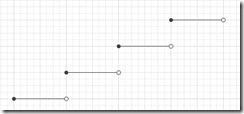|
|
Exclusive end dates
They all have one thing in common. They specify an expiration data inclusively. Usually, this just makes things hard. Sometimes it leads to real problems. Azure 2012John Petersen wrote up a good summary of the leap day Azure outage. In it, he explains clearly why the simple solution of AddYears(1) is not enough. Azure experienced an outage because one certificate was valid through February 28, 2012, while the next was valid starting March 1, 2012. The code failed to account for leap day. As John explains, simply using proper date logic instead of string manipulation will still not account for the extra day. Tiny gapsCode that checks for times between 12:00 am and 11:59:59 pm fails to account for the last second of the day. I’ve seen people include milliseconds in that check. While this fills in the gap to the precision of the clock, it makes a bold assumption. Times are often stored using floating-point values, which are subject to round-off error. You are assuming that you will always round into the valid range instead of out to the tiny gap. Consecutive rangesWhenever software needs to handle a date or time range, it’s usually because something else is going to happen in the next consecutive range. We could be starting the next fiscal year, rolling over to the next log file, or enabling the next certificate. When ranges are specified using inclusive end times, the start time for the next consecutive range is not equal to the end time of the previous one. At a minimum, this makes the calculation of consecutive ranges more complex than it needs to be. You need to add or subtract a day, a second, or a millisecond, based on the precision of your clock. At worst, this allows for gaps. They might be tiny. Or they might be a complete leap-day. Inclusive start, exclusive endThe simplest solution is to specify date ranges with an inclusive start and an exclusive end. In mathematics, this is written as “[)”, as in “[5/1/2011, 5/1/2012)”. In code, it’s just >= and <. This has the advantages of simplifying consecutive range calculations and filling the gaps. The beginning of the next consecutive range is equal to the end of the current one. You don’t have to think about it. There is no need to add or subtract days. You don’t need to know the precision of your clock. There is no gap between < and >=. These operators are opposites. If you compare two values - even floating-point values - with one, you will always get the opposite answer as you would with the other. It is unambiguous which side of the line a value falls, as long as one side is inclusive and the other is exclusive. People don’t usually think in terms of exclusive ends. If you read “Sale ends Saturday” only to find that items were full price Saturday morning, you’d be upset. So translate exclusive ends into inclusive ones when you present them to the user. But always store and calculate date ranges with inclusive start dates and exclusive end dates. |



